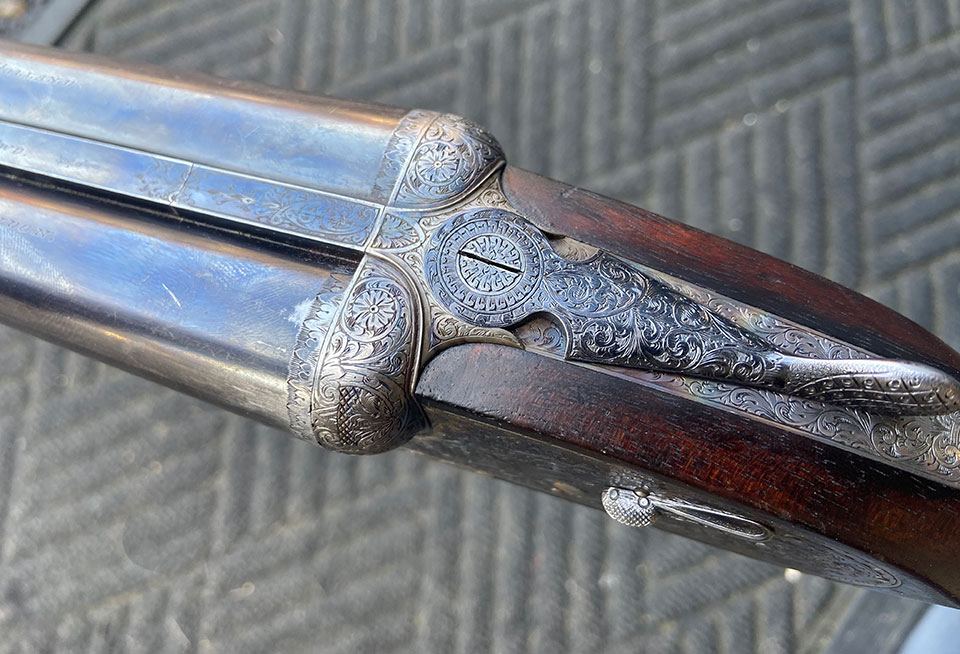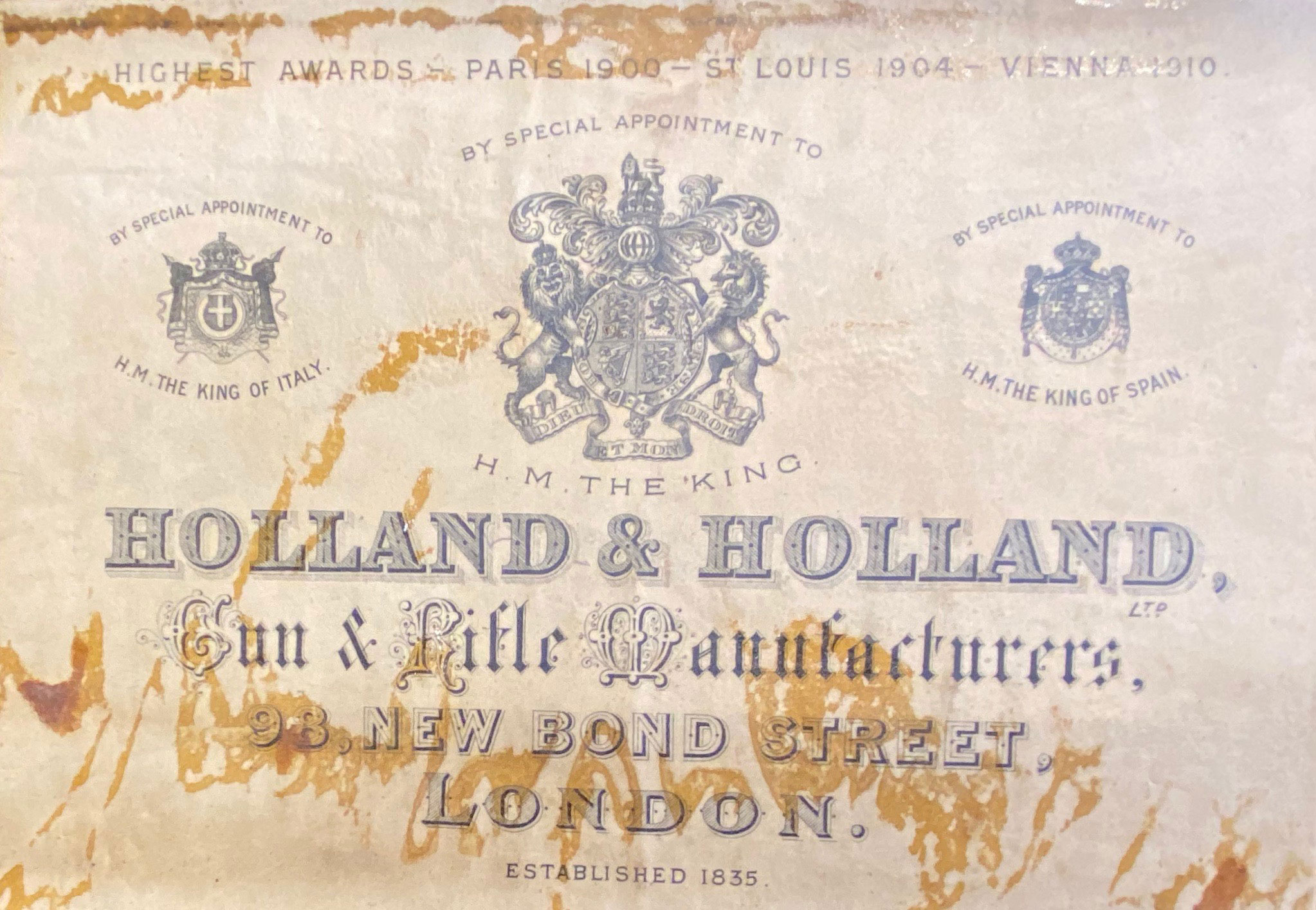It may sow a few sars from decades of fair use but this is a very honest looking gun from the mid 1930s, just as we like to find them.
Anyone familiar with English guns will recognise it instantly as a Holland & Holland 'Royal'; the most copied sidelock ever made. Many people consider the 1930s the heyday of the classic British game gun. It was a time when all the major mechanical operations were well established, reliable and trusted. Patents had lapsed and the best designs were available to every gunmaker in the country.

Serial number 33029 left the New Bond Street shop in 1935. It has 28" barrels, both choked at three-quarter and the 1922 Holland patent self-opening system and hand-detachable locks. With a 14 1/2" stock, it weighs just 5lbs 8oz. This is very light for a twelve-bore but that is explaind by the chambers, which measure just two inches. The ribe engraving 'Royal Twelve-Two' explains the model.

Two inch cartridges are, amazingly still available, though I have never been on a driven shoot where anybody shot with a gun chambered for them. You can pick up the 'phone to Just Cartridges and order as many as you like.

The two-inch cartridge made an entrance in the 1890s, as the Charles Lancaster 'Pygmie', loaded with an ounce of shot and not immediately accepted by the leading critics of the day. A tendency for wads to tip and shot to ball was a major criticism but this issue was resolved and the two-inch concept remained popular well into the 1930s.

The idea appears largely to allow the building of a very light gun to fire modest loads with comfort, while avoiding the danger of having a twenty-bore and with it the possibiity of mixing cartridges to catastrophic effect.

This gun is built to best standards will all the classic features of the pinnacle of development of the 'Royal'. It is a splendid example. The London proof marks show it to be proof tested for 1oz and stamped 2". The case retains its trade label as well as instructional labels for cleaning and lubrication.

The classic large scroll engraving retains its original sharpness as well as over 50% of its case hardening colour. Many would restore the finish on the barrels and stock but to my eye, the honest wear and patina on the gun are part of its charm. Beyond a proper strip, clean and service, I would not change it at all.

For those interested in the price of a gun like this at this point in time, it sold recently for just over £11,000. In doing so, it bucked the predicted trend for a fall in the value of specialist British guns which are unsuited to steel shot loaded cartridges. The market appears to think more ammunition alternatives will emerge (as they are) and that these guns will continue to perform as beautifully in the field as they always have.
Published by Vintage Guns Ltd on




